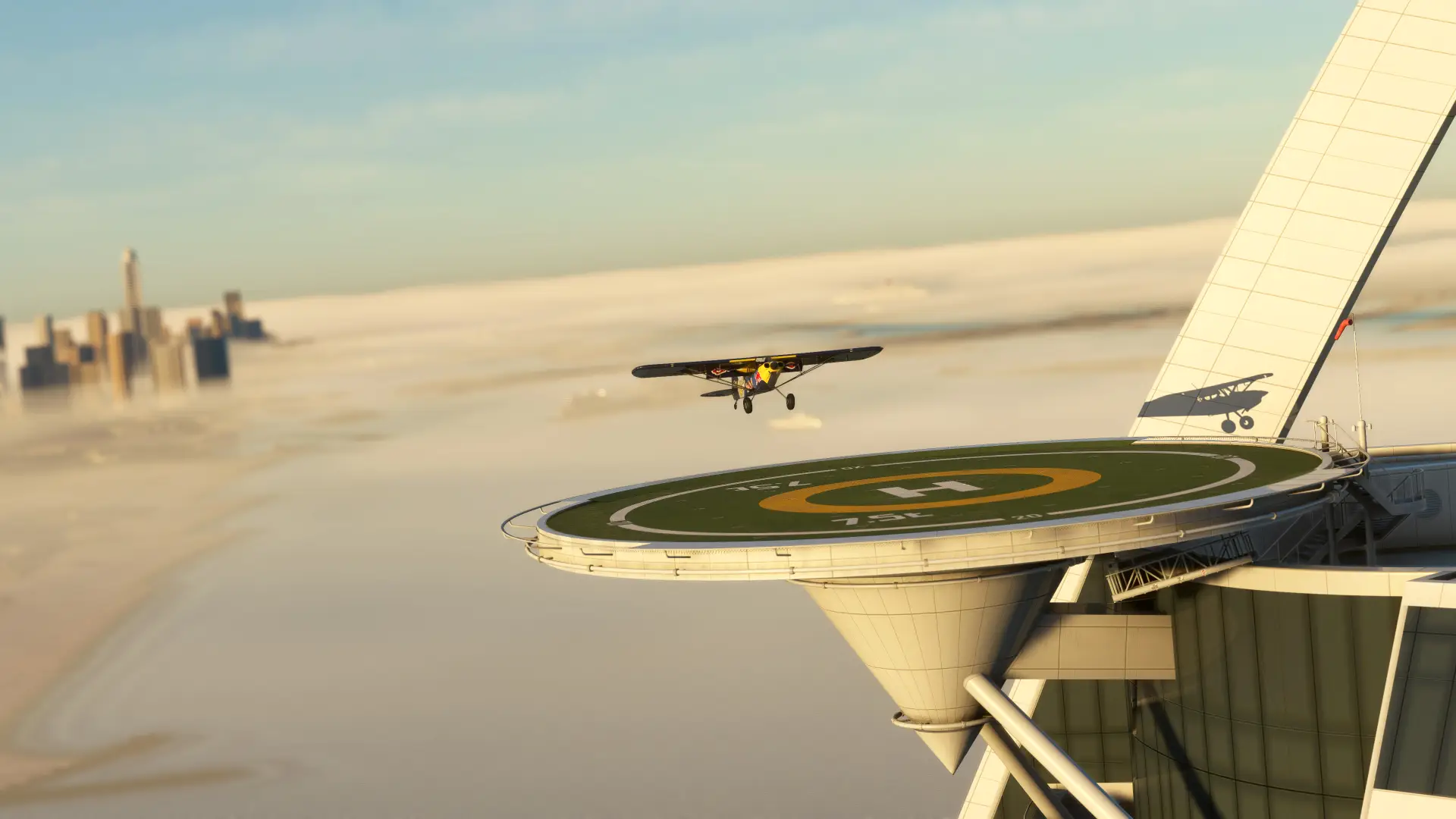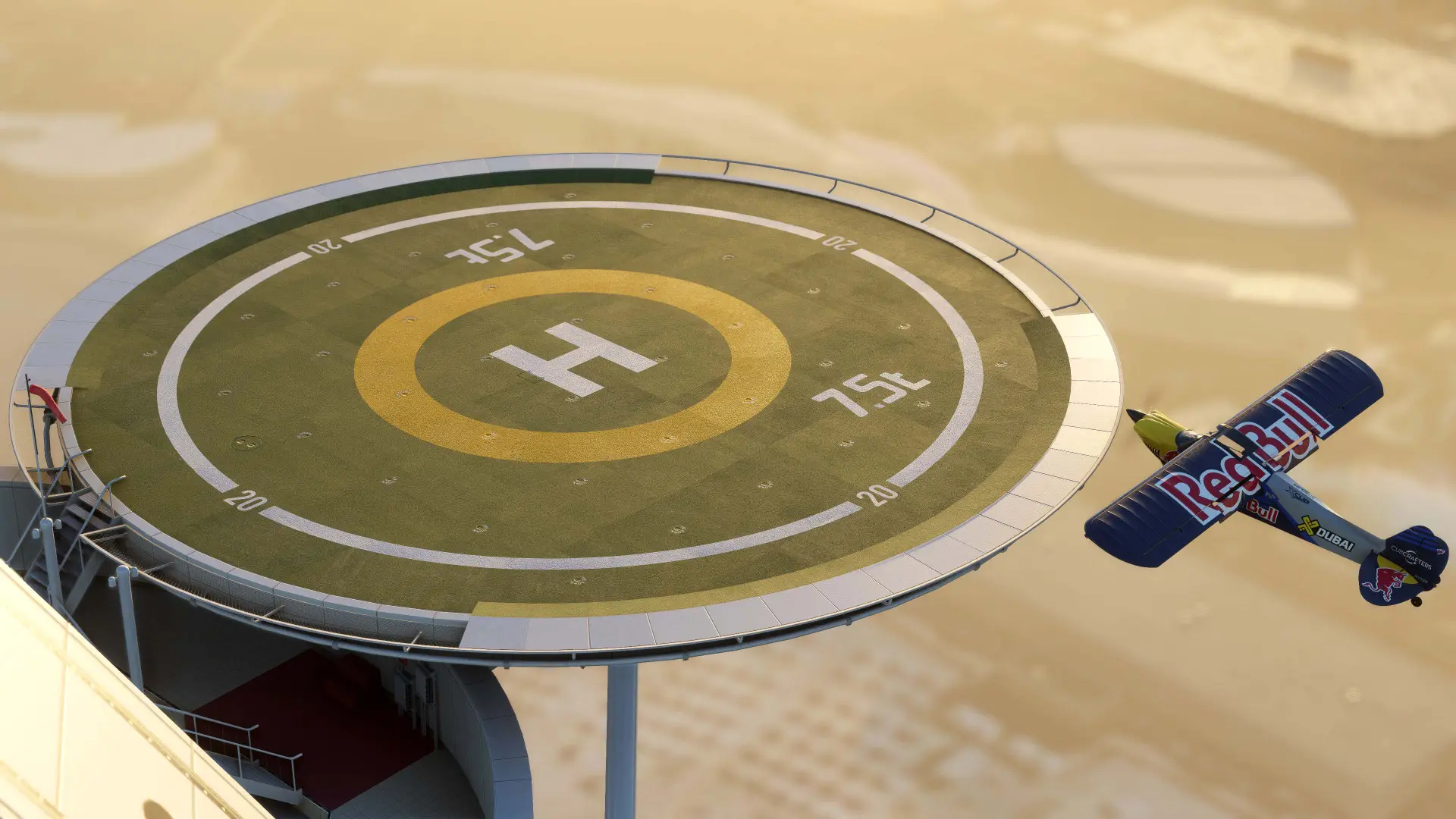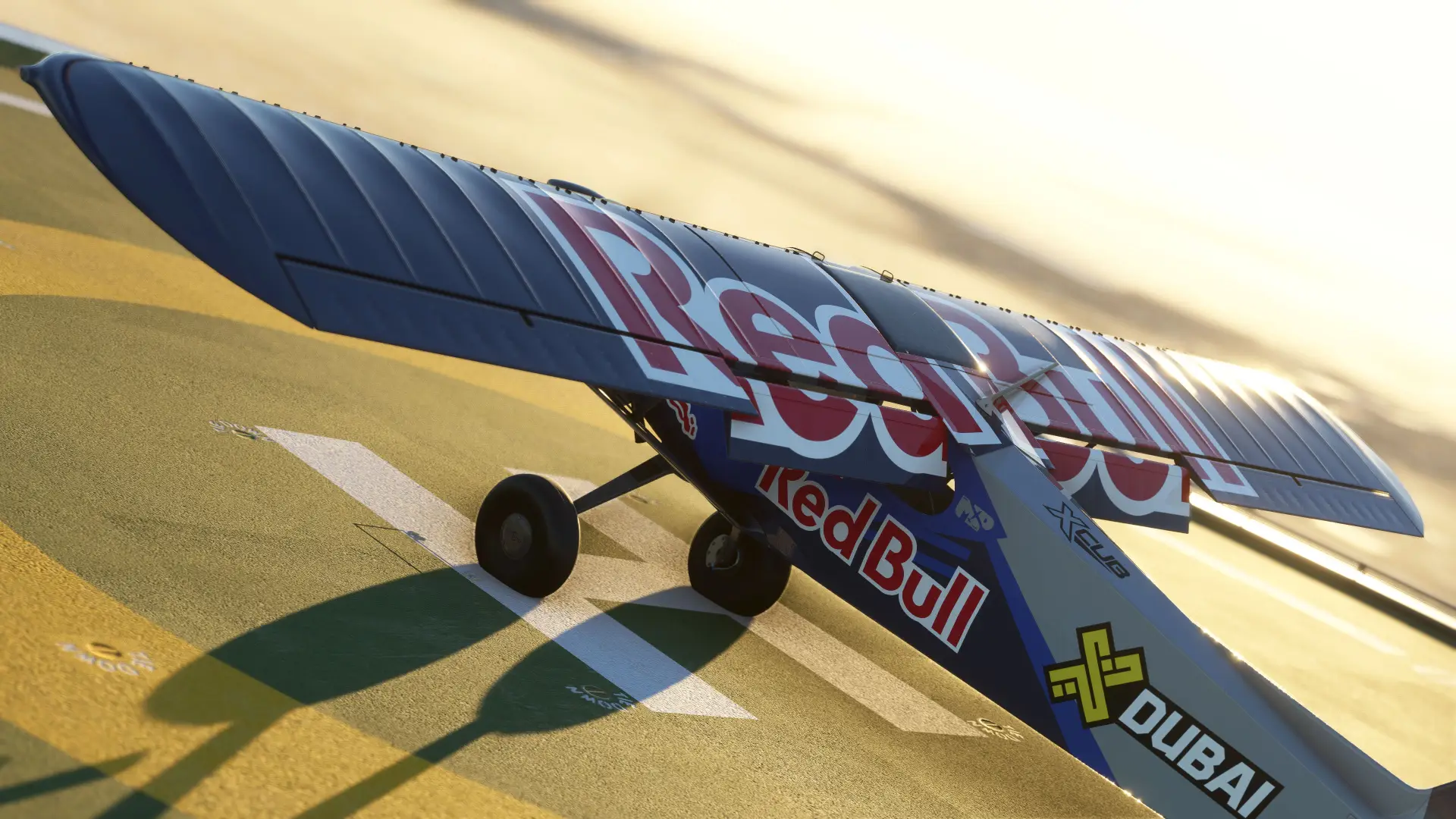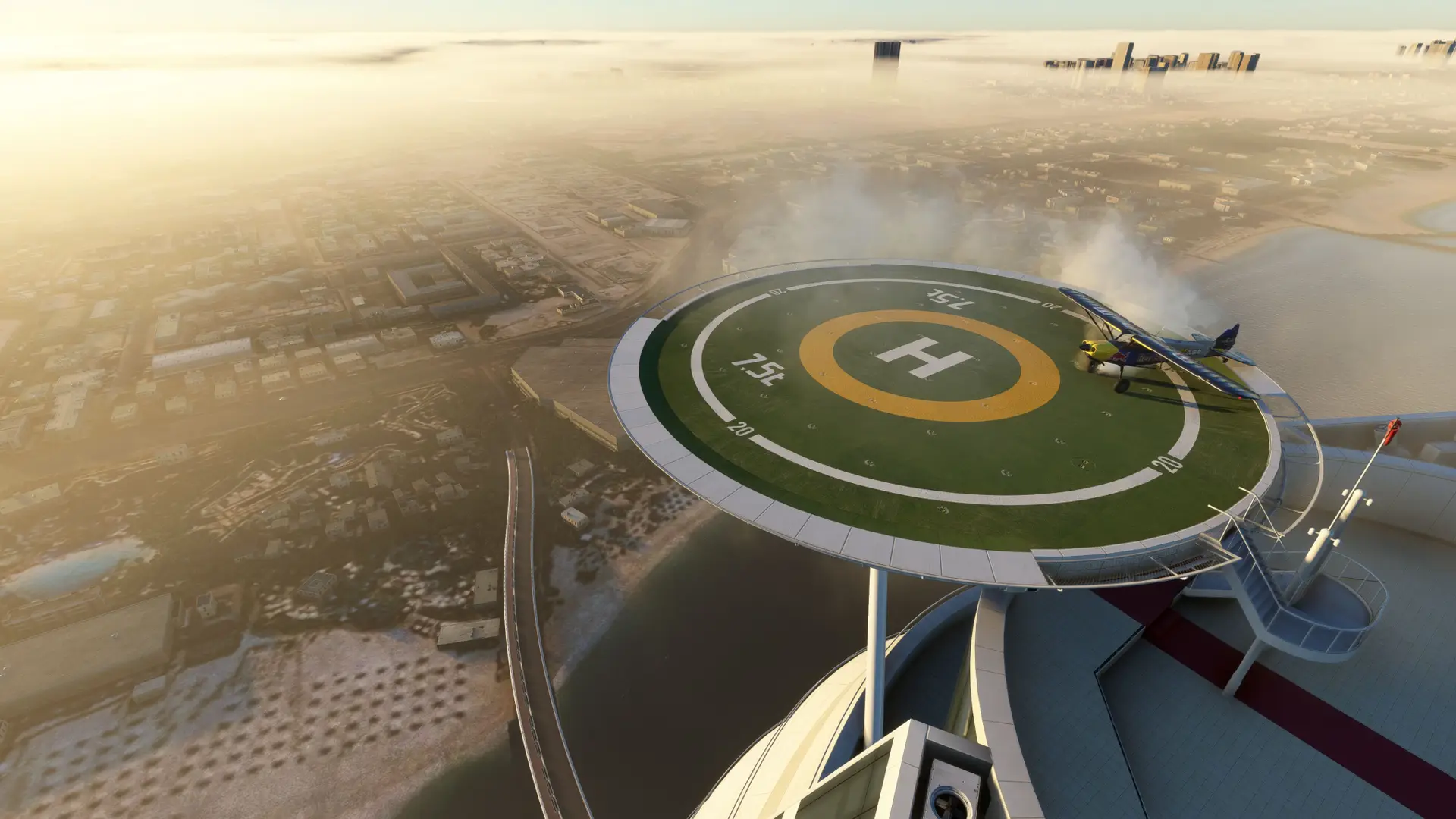- FREE!
- View more offers at FS Addon Compare
- Added: July 24, 2023
- Updated: July 9, 2025
Dubai’s Burj Al Arab Jumeirah is one of the most distinctive and beautiful works of architecture in history. Evocative of a sail filled with wind at sea, the ultra-luxury hotel soars 1,053 feet above the crashing surf and white sands of Jumeirah Beach on the Persian Gulf coastline. One of the tower’s most notable features is located near the structure’s zenith, an 88-foot-diameter circular helipad positioned on its southeastern aspect. On March 14th 2023, Polish pilot Luke Czepiela wrote aviation history by becoming the first person to land a plane on this iconic helipad.
While short take-off and landing airplanes can touch down and come to a complete stop in spans less than 88 feet, a number of factors conspire to make this the ultimate STOL landing challenge. First is its position in space: the helipad is not like an 88-foot-long runway chopped into the side of a mountain, but it is more akin to an “island in the sky” at a fixed altitude—similar to an aircraft carrier deck, but much smaller and much farther removed vertically from its surroundings. This required Luke to maintain acute focus on the pad during the entire approach due to the lack of surrounding familiar visual references. Because it occupies such a small swath of visible space until just before touchdown, diverting visual attention to its surroundings can easily cause confusion and result in an aborted attempt—or worse. Furthermore, aviators will need to be prepared for what is called “motion parallax,” where their speed will appear to increase as they approach the pad, a phenomenon that is amplified due to the small size of the pad and its isolation in space.
Due to its size, room for error is measured in inches when attempting a Bullseye Landing with a STOL aircraft. Pilots need to be constantly mindful of their altitude and rate of descent. The indicated altitude of the helipad is 728 feet above mean sea level, and pilots need to maximize their roll-out. The aircraft needs to touch down as close to the edge of the pad as possible, while minding the aircraft’s tail, flying as slowly as possible, as in right at stall speed. Upon touchdown, pilots must apply brakes immediately. Some use rudder input to turn, which adds roll-out distance to the small landing zone. Even a few feet can make the difference between success and falling off the pad.
This landing challenge, which features one of the world’s best STOL craft, a CubCrafters Carbon Cub UL, begins over the Palm Jumeirah, an assemblage of man-made islands to the southwest of the Burj Al Arab. To make the attempt, pilots must parallel the coastline from the Palm Jumeirah, flying to the northeast. The wind was one of the biggest challenges for Luke during his attempts. A strong headwind helps reducing the ground speed, but at the same time it will increase the turbulence around and above the helipad, and pilots will need to deftly apply flaps to further reduce velocity during the approach.



